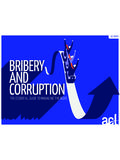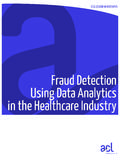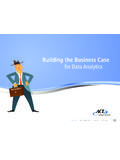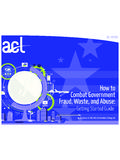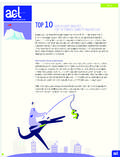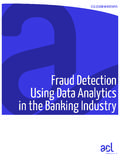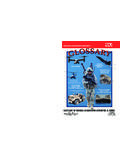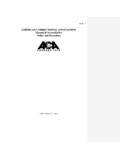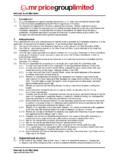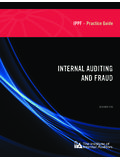Transcription of Integrating Working Papers with Audit …
1 ACL WHITEPAPERI ntegrating Working Papers with Audit ManagementHow to shift from common practices to best practices Dan Zitting, CPA, CISA, CITPVice President, Product management & Design2 WHITE PAPERT able of ContentsEXECUTIVE SUMMARY..3 THE EVOLVING ROLE OF Working Papers ..3 GENERAL GUIDELINES FOR WORKPAPERS ..4 Characteristics of quality workpapers ..4 COMMON ISSUES OF TRADITIONAL PREPARATION PROCESSES ..5 Inconsistent practices within Audit teams ..5 Manual, general-purpose work Papers solutions create inefficiencies ..5 Shared-drive chaos ..6 Enabling mobile fieldwork ..6 Added costs for configuration, training and customization.
2 7 Disparate Audit functions and workflow silos ..7 Audit Performance Gap ..7 THE CASE FOR CONVENTION OVER CONFIGURATION ..8 FROM COMMON PRACTICES TO BEST PRACTICES ..81 . Integrate Working Papers documentation into the Audit management process ..82 . Favor convention over configuration ..93 . Redirect resources to strategic Audit activities ..9 ACL Audit management SOLUTION ..10 Designed for the Chief Audit ..10 with the auditor s needs in .. leading the way in cloud application security ..10 CASE STUDY: 30% WORKFLOW PRODUCTIVITY GAINS with ACL GRC ..11 CONCLUSION ..11 ABOUT ACL ..123 WHITE PAPERE xecutive summaryAudit Working Papers serve as important reference points for the entire Audit lifecycle, providing Chief Audit Executives (CAEs), independent Audit firms, and risk and control consultants with a baseline of vital Audit documentation and intelligence.
3 Despite their strategic value, many organizations approach this critical Audit function with a check-list-type-philosophy, driven by tactical and often manual project management processes . Further, standards for exactly what must be included in Working Papers or how they are prepared are loosely defined, resulting in inconsistent practices and quality issues among Audit departments . As Audit capabilities mature and organizations implement different software or computer assisted Audit techniques (CAATs) to automate their Audit process, a common risk for many organizations is that workflows become overly complex and disjointed . Different workflows and technology solutions exist for different functions of the Audit process: Audit project management , Working Papers , data analysis, Audit analytics, external review, and reporting.
4 These factors contribute to a new type of business risk called the Audit Performance Gap the strategic value that is lost due to inefficiency in the Audit management process . Integrating a fully automated and purpose-built Working Papers management solution into the Audit lifecycle, organizations can break down the silos . Administrative tasks and resources once spent on managing the Working Papers process can be redirected to strategic and valuable Audit activities such as enhancing Audit analysis techniques, conducting additional audits, evaluating additional organizational risks, or training and up-skilling Audit staff . This paper explores common issues with traditional Working Papers methods and how to overcome them.
5 It also provides three practical steps for establishing best practices for Working Papers management and closing the Audit Performance Gap .The evolving role of Working Papers Working Papers are fundamental to the Audit process . Accurate and thorough documentation of work performed is necessary to support the key findings, recommendations and opinions contained in Audit reports and conclusion memos . However, auditors traditionally consider the preparation of Working Papers a process separate from that of Audit project management . In fact, for those elite Audit teams that achieve highly productive, consistent and effective Audit execution, preparing Working Papers and managing audits go hand-in-hand; just as pedaling and steering are a collaborative set of actions necessary to riding a bike.
6 A common and unfortunate misconception is that Working Papers only apply to the fieldwork phase of the Audit cycle . This is not true . Work Papers serve as an important reference point for the entire Audit process . Working Papers , when created and managed properly, provide a baseline of vital intelligence before, during and after an Audit . During the planning stage of an Audit , the prior period s Audit work helps set context and helps to steer current review around problem areas . During an Audit , Working Papers capture auditors work, flesh out areas of risk, and communicate results among Audit team members and other stakeholders . Upon completion of an Audit , Working Papers support the final report and conclusion memos, documenting the work completed at each stage of the project and serve as the body of knowledge for future audits.
7 Working Papers also show whether due professional care was exercised and illustrate compliance with professional auditing standards . For auditors whether internal auditors, independent Audit firms or risk and control consultants, Working Papers can help them be more effective, more productive and ultimately add more strategic value for their organization . Integrating Working Papers with Audit management How to shift from common practices to best practices 4 WHITE PAPERG eneral guidelines for workpapers While Working Papers are duly acknowledged as generally accepted practices, standards for exactly what must be included in Working Papers or how they are prepared are loosely defined.
8 Rather than providing stringent rules, professional standards provide context and guidance for sound judgment relating to Working Papers . For example, the International Standards for the Professional Practice of Internal Auditing specify Working paper requirements in a variety of sections, including: 2240 Engagement Work Program Internal auditors must develop and document work programs that achieve the engagement objectives . 2300 Performing the Engagement Internal auditors must identify, analyze, evaluate, and document sufficient information to achieve the engagement s objectives . 2310 Identifying Information Internal auditors must identify sufficient, reliable, relevant, and useful information to achieve the engagement s objectives.
9 (Interpretation: Sufficient information is factual, adequate, and convincing so that a prudent, informed person would reach the same conclusions as the auditor . Reliable information is the best attainable information through the use of appropriate engagement techniques . Relevant information supports engagement observations and recommendations and is consistent with the objectives for the engagement . Useful information helps the organization meet its goals .) 2320 Analysis and Evaluation Internal auditors must base conclusions and engagement results on appropriate analyses and evaluations . 2330 Documenting Information Internal auditors must document relevant information to support the conclusions and engagement results.
10 Similarly, section 4 .35 of the Government Auditing Standards advises that: Working Papers should contain sufficient information to allow an experienced auditor having no previous connection with the Audit to ascertain from them the evidence that supports the auditors significant conclusions and judgments . Additionally, vague guidelines from many other professional bodies apply to Working Papers for different types of audits . As a result, auditors are largely free to devise their own system or style for documenting their work . While this provides flexibility, it also creates opportunity for too much variation which can move audits off track and create inefficiencies, errors and risks.
